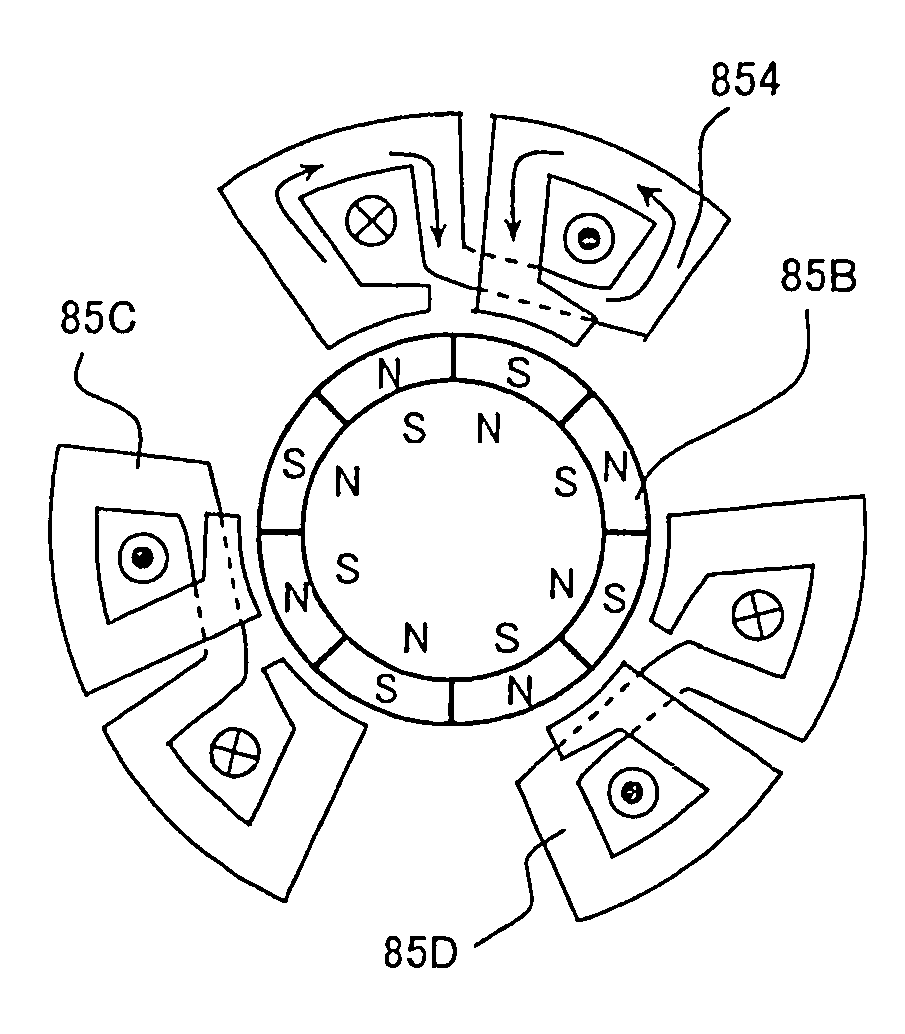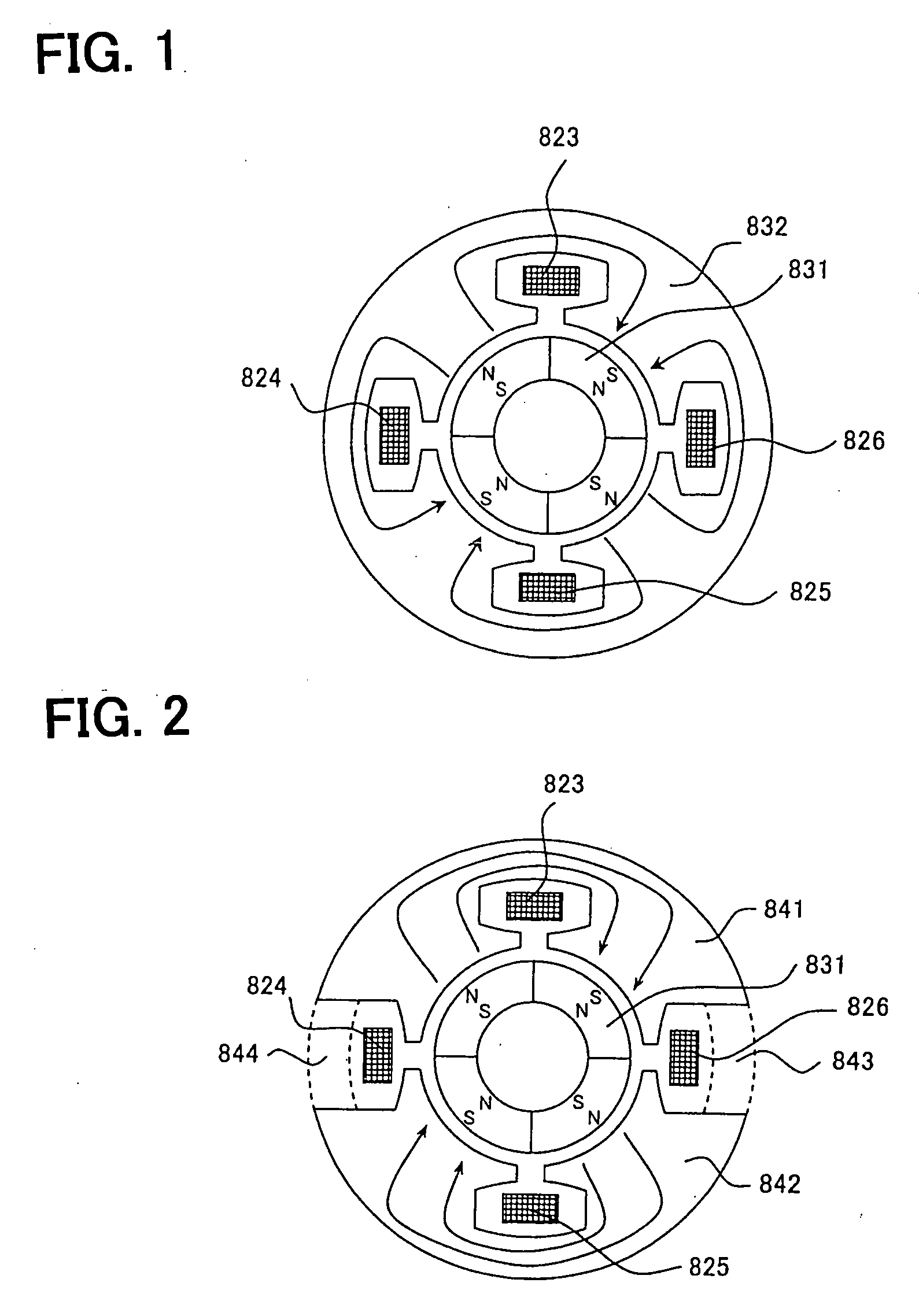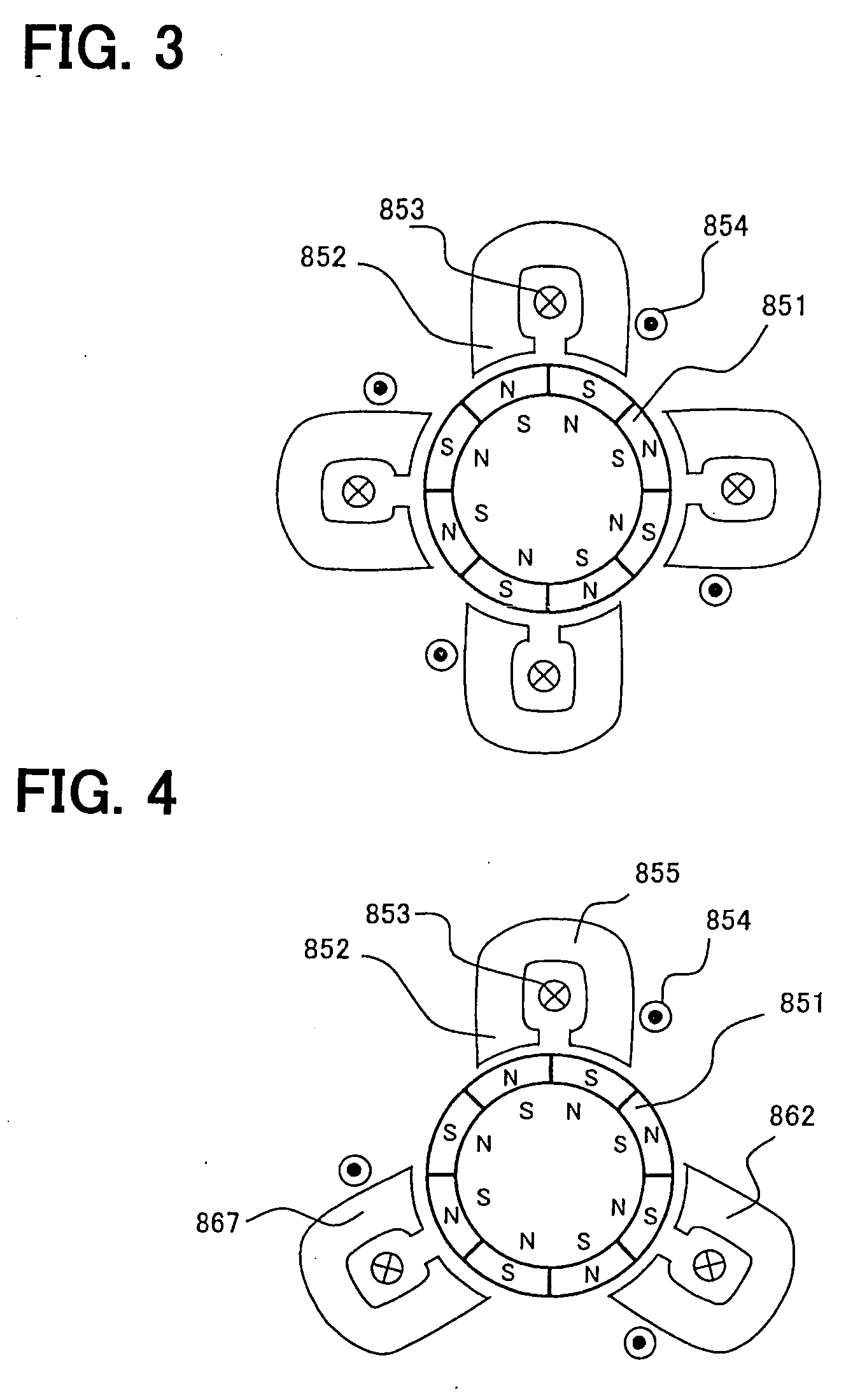Ac motor and control unit thereof
a technology of ac motor and control unit, applied in the direction of dynamo-electric converter control, magnetic circuit shape/form/construction, electronic commutator, etc., can solve the problems of large outer shape of the motor, unignorable eddy current loss, and large parts removed with portions, so as to reduce size, high performance, and reduce the effect of configuration
- Summary
- Abstract
- Description
- Claims
- Application Information
AI Technical Summary
Benefits of technology
Problems solved by technology
Method used
Image
Examples
Embodiment Construction
[0133]With reference to the drawings, hereinafter will be described, in detail, motors according to various embodiments to which the present invention is applied.
[0134]FIG. 1 shows a single-phase four-pole AC motor. Indicated by numeral 831 are permanent magnets for a rotor, by 832 is a stator core made of soft magnetic material, and by 823, 824, 825 and 826 are single-phase windings. Some methods may be provided in giving turns of the windings. One example is to give turns of the windings 823 and 824 to obtain single-phase windings, and to give turns of the windings 825 and 826 to obtain single-phase windings. In this case, the maximum amount of magnetic fluxes interlinking with the winding 823 shown in FIG. 1 corresponds to ½ of magnetic fluxes of one magnetic pole of the permanent magnet 831.
[0135]FIG. 2 shows a motor of FIG. 1 but with portions 843 and 844 shown by broken lines being cut and removed. In this case, the maximum amount of magnetic fluxes interlinking with the windi...
PUM
 Login to View More
Login to View More Abstract
Description
Claims
Application Information
 Login to View More
Login to View More - R&D
- Intellectual Property
- Life Sciences
- Materials
- Tech Scout
- Unparalleled Data Quality
- Higher Quality Content
- 60% Fewer Hallucinations
Browse by: Latest US Patents, China's latest patents, Technical Efficacy Thesaurus, Application Domain, Technology Topic, Popular Technical Reports.
© 2025 PatSnap. All rights reserved.Legal|Privacy policy|Modern Slavery Act Transparency Statement|Sitemap|About US| Contact US: help@patsnap.com



